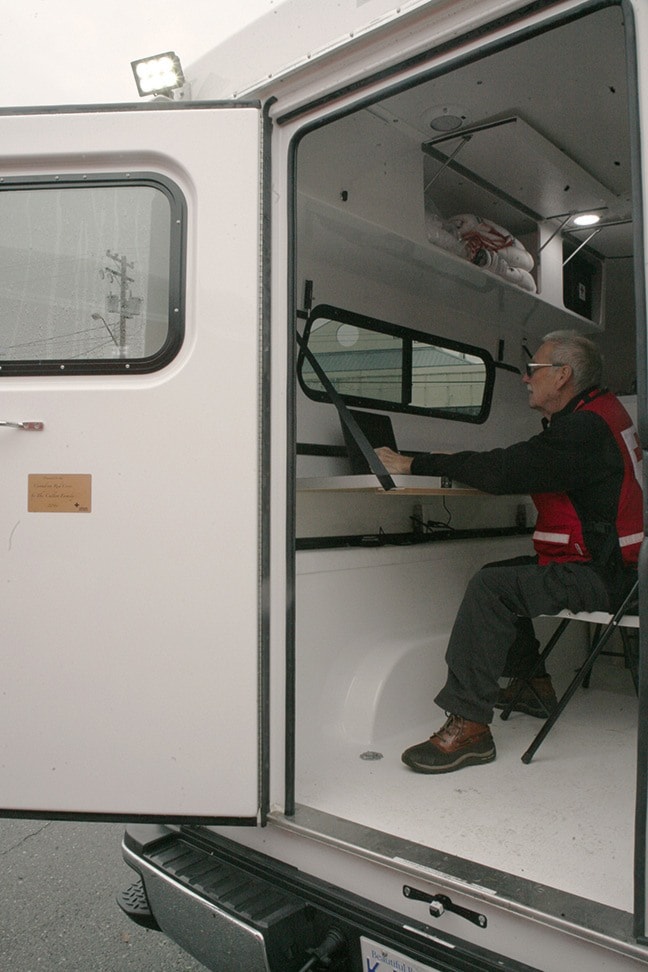Erin Haluschak
Record staff
It may only look like a truck and trailer, but what is inside a new Canadian Red Cross mobile unit can significantly help a community in a time of need.
This week, one of four mobile units made its way across the Island, and stopped in Courtenay Tuesday at the Red Cross office to bring awareness to what the unit can offer if a disaster - flood, fire, earthquake or other - should strike.
“It’s essentially a 200-bed mobile shelter,” explained Derrick Harvey, a volunteer with the organization’s North Island Emergency Response Team.
There will be four units across B.C. and the Yukon, and Harvey said he hopes to see one on Vancouver Island soon.
The idea for the units, which can also double as command posts, began about two years ago when the organization decided more preparation - and the capacity to prepare for a disaster - was required.
The trailer holds 200 cots that can be set up in a recreation centre, school or other facility.
Harvey said the issue particularly came to light following three recent Alberta disasters; the Slave Lake fire, High River flooding and the recent fires in Fort McMurray.
“We are looking at a major disaster … as long as the roads and bridges are still in place, we can go there. The truck and trailer were purposely bought to meet the worst possible catastrophic situation.”
The mobile units, built on the Lower Mainland, cost about $125,000 each, and can fit about three to four people in the unit that sits on the truck. They are fully insulated, and offer three sources of power - battery, 110V or solar - for a team to register clients on laptops with USB connections, which can be set up inside.
Harvey added the entire truck acts as a wifi hotspot to monitor social media, and on the exterior there is a cell phone charging station for anyone to use.
It also has energy efficient light inside, and flood lighting on the outside for nighttime use.
“Our goal was for (the unit) to be comfortable and efficient. We had to think: ‘what will be available to (people) immediate after a disaster?’ This can morph into an actual shelter.”
